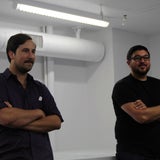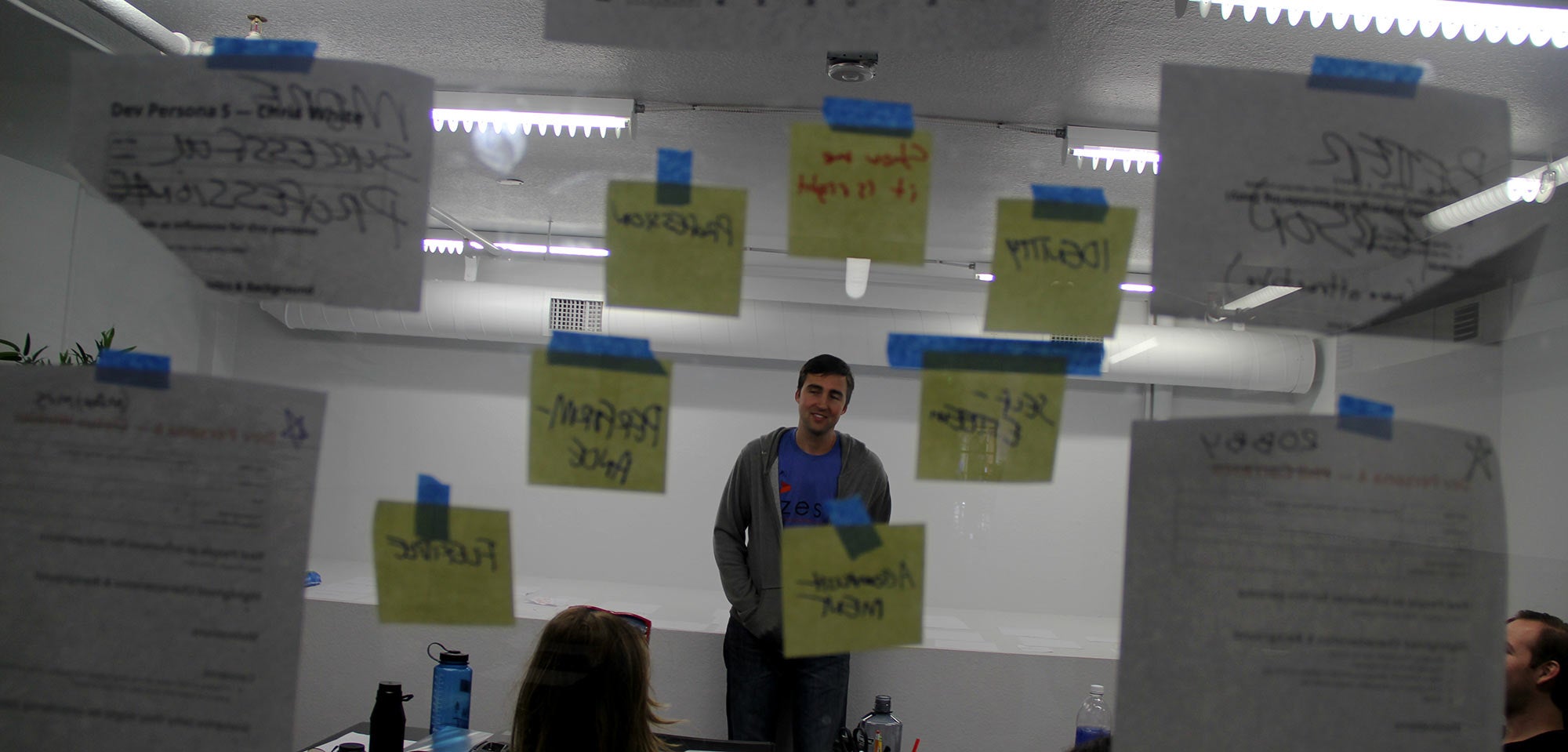Lean Brand Session 4: Final Personas and Working Hypothesis
Jeremiah Gardner has the team act out each persona and prepares us to test our findings in the wild
11.13.2013
Say hello to the fourth article of from the Lean Brand Methodology series. Read about the session prior here: The Emotional of Personas.
Getting to know your Personas
How do you get your team to know the personas really well? Have them act them out. This forced each of us to really understand the personas while playing shakespeare. This is not very normal for a group of developers and marketers, but it ended up being a fun exercise and it really got us to know the personas.
How personas were realized by the team
We narrowed down our six personas to four, and distributed one persona to each of the actors (the dev team). Each team member was assigned the task of summarizing the persona distributed to them. This forced the individual to become an expert on that persona. Each team member read out the short description summary, and we critiqued them as a team. When the session started each team member was told they must act out the persona by telling a life story and answer questions (this was a surprise as team members did not know they would have to act out their assigned persona). Those not acting served as panel judges. Panel judges would ask prying questions to really make sure the persona was on point. Questions like "when did you start designing websites", "how did you feel about college", "do you have a boyfriend", etc..
After each persona was acted out, the team then discussed the emotions we felt from the presentation. This was executed for affirmation on our hypotheses on the persona. We learned a little more about each persona, and in some cases where we missed the mark. This lead into a one word summary of each persona. One example is "Grappler", another is "Fulfiller".
Cash vs. Influence vs. High Adoption
All of the above are very very important to growth, but which is more important for our current stage. That decision can be made alongside discovering which persona lends itself in either direction. Here are a few example predicaments. We think Persona A will lead to major influence, but the adoption rate on that persona requires a lot of hand holding. We think Persona B a will generate the most cash influx, but will need to be influenced by peers. We think Persona C will adopt the product quickly, but will require a free model to generate usage.
“As startups, we tend to think about market value segments exclusively in terms of money. This makes sense as money is probably our biggest need / want. Yet people have value beyond just cash. Influence, adoption, longevity, insight, etc. are also values to take into account when determining your product-market fit.”
—Jeremiah Gardner
Which persona do you approach?
Marketing to, and growing to, a persona has many layered costs. Costs like marketing budget, development direction, features, language direction, and artifact creation. Using our personas is helping us tackle that tough decision. Making the right decision will ultimately benefit the product, our team, and our users. To help us make that decision, we have to run tests in the wild against our hypothesis.
Hypothesis Testing
The way you pitch your product will be different for each persona. Each pitch will need to be tested in real life scenarios. Depending on your personality type, this part of the process is either really difficult, or just fun. You need to find a channel to test your hypothesis; I've been out testing with people at local events, friends, and strangers (Meetup.com is great to find the right event). I try to match up the person I speak to with one of our personas before I start talking. It helps if you ask them what they do first. Remember this isn’t to sell the product or even talk about your product, but instead, to learn more about the persona you think would be interested in your product. Going in with this mindset your ultimate goal is to observe livewires.
What are Livewires?
When pitching your product watch for when the person listening either perks up, goes dead, runs away, does a back flip, completes your sentence, or anything really. Each of these responses is a livewire, each livewire provides your brand direction so take mental notes. Take away what worked and what did not, then repeat the same pitch to the next person. Did everyone respond poorly, than time for a change up. If everyone responds great keep testing it, change it up to get them to respond poorly. Then iterate. This will tell you what is working. In all iterations, when you are talking about your product/brand the livewires will tell you best way to communicate it.
What if a pitch turns into a sell?
If you find someone interested in your product it will feel great. To be ready for it we lined up each of our product utilities to the persona they match. This makes selling relevant. Do not tell an internet marketer that your javascript editor autocompletes, it won't be very effective.
Continuing reading to The Minimum Viable Brand, the 5th article of the lean brand sessions

Jeremiah look on to the acted out personas, soaking up all he can to help formulate hypotheses.

Jeremiah stands by as Dustin gets grilled on acting out his persona. Lots of discovery was happening as the team grilled the persona actor.

You can seeing Andy acting out through the madness of sticky notes that describe our personas. Andy took a different approach to acting, he talked about his persona like the persona was a friend of his. For example he would respond to questions like "Persona B doesn't like ice cream". Jeremiah swears he will make Andy act eventually.
